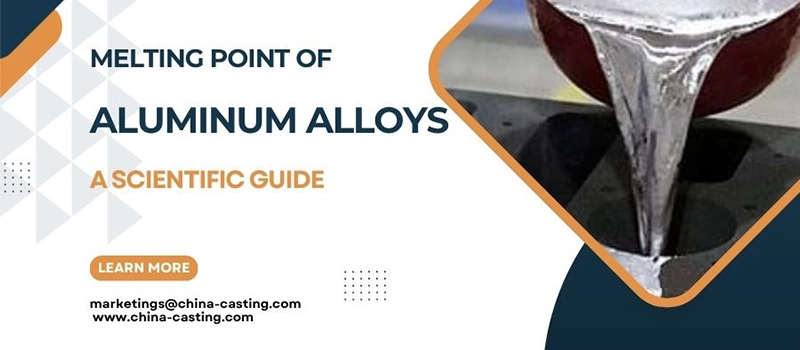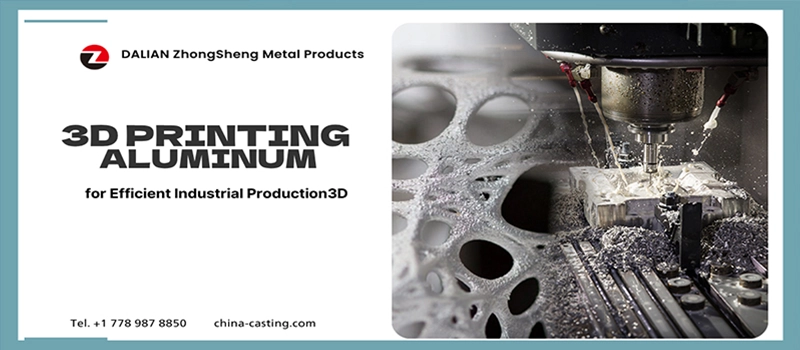The melting point of stainless steel refers to the temperature range at which the alloy transitions from a solid to a liquid state. Due to its alloyed nature, the melt point of stainless steel varies based on its composition—especially the levels of chromium, nickel, and molybdenum. This melting range typically falls between 1375°C to 1530°C (2500°F to 2785°F). Each grade of stainless steel, such as 304 stainless steel, 316 stainless steel, 310, or 17-4PH stainless steel, demonstrates distinct melting behavior due to differences in chemical structure.
Understanding the melting point of stainless steel is critical in metal fabrication, casting, welding, and other high-temperature applications. As reported in the ASM International Metals Handbook, improper material selection based on inadequate knowledge of stainless steel melting points is a common cause of premature failure in components exposed to thermal stress.
Engineers and procurement professionals must carefully evaluate the melting point of stainless steel in Celsius and Fahrenheit when selecting materials for high-heat environments—such as exhaust systems, heat exchangers, furnace parts, or pressure vessels. During thermal processes like annealing, hot forging, or brazing, the melt point of stainless steel directly determines thermal feasibility and safety margins.
Industries such as aerospace, automotive, petrochemical, and power generation rely heavily on stainless steels because of their ideal balance between corrosion resistance and high-temperature tolerance. Choosing a grade with an inappropriate melting point of stainless steel can lead to thermal distortion, weld cracking, or loss of mechanical strength under elevated operating temperatures.
International organizations like ASTM International, ISO, DIN, and SAE provide verified melting point data for stainless steel in standards such as the Metal Handbook and EN series. These technical documents give reliable benchmarks for the melting point of stainless steel 304, 316, and other grades, and are critical references in engineering design.

Engineering teams use material datasheets, metallurgical databases, and simulation software to analyze and compare melting ranges before finalizing material decisions. For instance, 316L stainless steel or 17-4PH stainless steel is often chosen when both corrosion resistance and a stable melting point of stainless steel are required. Proper integration of melting point data into design and process selection guarantees performance reliability in heat-intensive operations.
What Is the Melting Point of Stainless Steel (in °C and °F)?
The melting point of stainless steel is the temperature range at which the alloy begins to lose its solid-phase integrity and transitions into a liquid state. Because stainless steel is a multi-element metallic system, this transition does not occur at a single fixed temperature but across a melting interval. This interval depends primarily on the alloy composition, crystalline structure, and impurity content.
The Scientific Basis of Stainless Steel Melting Behavior
From a metallurgical perspective, the melting point of stainless steel is defined by its alloyed composition within the iron–chromium–nickel family. According to the ASM International Metals Handbook, the melt point of stainless steel does not occur at a single fixed temperature. Because stainless steel consists of multiple principal alloying elements, atomic interactions produce a sloped solidus–liquidus temperature curve, instead of the sharp melting point seen in pure metals. This explains why the melting point of stainless steel is expressed as a temperature range rather than an exact value.
In most austenitic stainless steels, such as those standardized under ASTM A240 and EN 10088, the melting point of austenitic stainless steel begins slightly below 1400°C and reaches full liquefaction near 1530°C. This interval between the solidus temperature (where melting starts) and the liquidus temperature (where melting completes) defines the characteristic melting range of stainless steel used in engineering calculations and material data sheets.
The exact melting point of stainless steel for each grade is verified through differential thermal analysis (DTA) and thermodynamic modeling, standardized under ISO 26203 and ASTM E794. These testing procedures ensure accuracy and consistency when reporting the melting range of stainless steel in Celsius and Fahrenheit, providing reliable data for manufacturers, metallurgists, and engineers in heat treatment, casting, and fabrication industries.
Why Stainless Steel Has a Melting Range, Not a Fixed Point
The melting of an alloyed system is governed by the phase equilibrium between its metallic constituents. Each element — such as chromium, nickel, and molybdenum — alters the binding energy between iron atoms.
- Chromium increases oxidation resistance but broadens the melting range due to carbide formation.
- Nickel enhances austenitic stability, slightly lowering the solidus temperature.
- Molybdenum and manganese contribute localized melting irregularities due to segregation effects during solidification.
Because of this, the temperature range is an inherent metallurgical property, not a measurement uncertainty. It reflects the material’s structural composition, as verified in phase diagrams published by the American Iron and Steel Institute (AISI) and the Japan Society of Metals (JSM).
Expressing the Melting Point in °C and °F
In international materials documentation, both Celsius (°C) and Fahrenheit (°F) are used to represent melting data.
- Celsius is the metric standard under ISO and ASTM specifications.
- Fahrenheit remains common in North American manufacturing systems, particularly in heat treatment and foundry operations.
The conversion relationship follows the standard physical equation:
°F = (°C × 1.8) + 32
For engineering reports and procurement contracts, consistency of units across technical drawings, certificates, and inspection records is required by ISO/IEC 80000‑5.
Many European datasheets specify melting intervals exclusively in Celsius, while U.S. manufacturers may list dual units to prevent misinterpretation during fabrication or thermal design.
Factors That Influence the Melting Point of Stainless Steel
The melting behavior of stainless steel and its corresponding melting point of stainless steel are governed by multiple interdependent variables, including chemical composition, microstructural phase, and alloying element interactions. The melt point of stainless steel varies not only with the proportion of primary elements—iron, chromium, and nickel—but also with trace additions such as molybdenum, carbon, and manganese. These variations directly influence the melting range of stainless steel across different grades, from austenitic to ferritic and martensitic types.
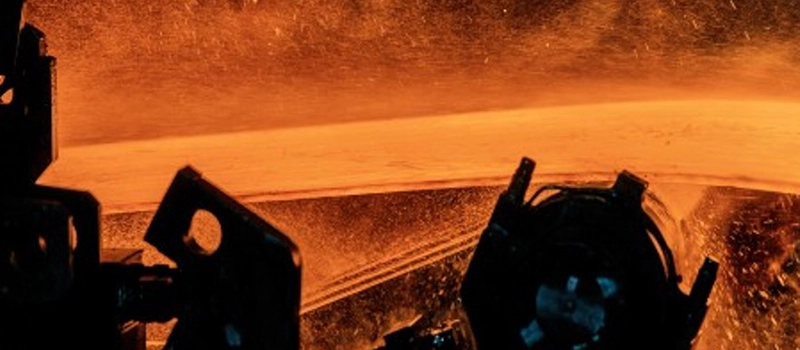
In practical metallurgical terms, the melting point of stainless steel is a function of both its thermodynamic composition and processing history. The combination of alloying design, heat treatment, and mechanical working determines how the melt point of stainless steel responds during casting, welding, or hot forging. Thus, the final melting behavior of stainless steel reflects not only its base chemistry but also its manufacturing method and thermal exposure history, defining the stability and performance of each specific grade under elevated temperatures.
1. Chemical Composition and Alloying Elements
In stainless steel, the principal alloying elements directly influence the temperatures at which phase changes occur. The following trends are consistently observed in thermodynamic phase stability analyses as reported in ASM Alloy Phase Diagrams Center:
- Iron (Fe): Base metal, provides structural matrix, melting point ~1538°C
- Chromium (Cr): Enhances corrosion resistance and raises melting range due to carbide formation
- Nickel (Ni): Stabilizes austenitic phase, reduces the lower bound of melting temperature
- Carbon (C): Though present in small amounts (<0.08% in austenitic grades), promotes formation of chromium carbides which affect local melting behavior
- Molybdenum (Mo): Increases resistance to pitting and crevice corrosion; also depresses solidus temperature in some cases
- Manganese (Mn): Acts as a deoxidizer and sulfur stabilizer; impacts segregation during melting
According to the European Steel and Alloy Database, the melting point of stainless steel with high molybdenum content can be 30–50°C lower than standard grades due to complex eutectic formations.
These elemental interactions define not only the solidus and liquidus thresholds, but also the behavior of the alloy during heat exposure, casting, or welding.
2. Metallurgical Structure and Phase Type
Stainless steels are typically categorized by their crystalline structure, each of which affects the thermal response differently:
- Austenitic Stainless Steels (e.g., 304, 316):
Face-centered cubic (FCC) structure; high nickel content; exhibit relatively low solidus due to stabilized gamma-phase iron.
Known for wider melting intervals and high thermal expansion. - Ferritic Stainless Steels (e.g., 430):
Body-centered cubic (BCC) structure; chromium-rich with little or no nickel; generally exhibit higher melting points and better thermal conductivity. - Martensitic Stainless Steels (e.g., 410, 420):
Supersaturated solid solution of carbon in BCC iron; transform to martensite upon rapid cooling; tend to have narrower melting ranges and slightly higher solidus points due to lower nickel. - Duplex Stainless Steels (e.g., 2205):
Mixed austenite-ferrite structure; exhibit intermediate melting behavior with improved mechanical and thermal properties. The balance of phases is sensitive to both temperature and cooling rate, making melting range prediction more complex. - Precipitation-Hardening Steels (e.g., 17-4PH):
Contain alloying additions like copper, niobium, or aluminum; during melting, these elements contribute to localized phase transitions and broadened solidification ranges.
Phase diagrams from the Schaeffler-DeLong diagram set confirm the structural transitions associated with alloy content and their corresponding thermal stability zones. These charts are routinely referenced in welding metallurgy and solidification modeling.
3. Impurities and Residual Elements
Uncontrolled or residual elements, such as phosphorus (P), sulfur (S), or oxygen (O), though often under 0.05%, can significantly affect the melting characteristics by:
- Forming low-melting eutectics
- Promoting segregation during solidification
- Introducing hot shortness or intergranular melting
This is particularly critical in welding and forging processes, where localized overheating can cause partial liquation, leading to cracking or porosity.

The Welding Handbook published by the American Welding Society (AWS) cautions that sulfur levels above 0.03% may lower the melting onset temperature by up to 15°C in austenitic steels.
4. Manufacturing Method and Heat Treatment History
The thermal profile of stainless steel is also influenced by its production process, particularly:
- Continuous casting vs ingot casting: Cooling rates affect segregation and final melting behavior
- Hot working vs cold working: Alters grain structure and residual stress distribution
- Solution annealing: Can homogenize microstructure, minimizing localized low-melting phases
- Surface oxidation during pickling or heat treatment: Increases emissivity, potentially altering surface melting under high radiant heat exposure
Wrought materials tend to have more uniform melting ranges, while cast stainless steels often present wider intervals due to dendritic segregation and compositional gradients.
Melting Points of Common Stainless Steel Grades
The melting point of stainless steel varies significantly depending on the specific grade. While the general melting range for stainless steel lies between 1375°C and 1530°C (or 2500°F to 2785°F), different alloy compositions and phase structures result in measurable differences among grades. Understanding the melting point of 304 stainless steel, 316 stainless steel, and other industrial grades is essential for engineers making heat-resistance or material selection decisions.
The data in this section are derived from standardized materials references such as the ASM Metals Handbook, ASTM A240, EN 10088, and mill test reports from global stainless steel manufacturers.
Melting Point of 304 Stainless Steel
Type 304 stainless steel is one of the most widely used austenitic grades. It contains approximately 18% chromium and 8% nickel, giving it excellent corrosion resistance and formability.
- Melting Point Range (°C): 1400 – 1450
- Melting Point Range (°F): 2552 – 2642
The melting point of 304 stainless steel is moderate compared to other grades. Its chemical structure ensures a balance between corrosion resistance and temperature performance.
Applications include kitchen equipment, chemical containers, architectural structures, and industrial piping where the melt point of stainless steel is not expected to be exceeded.
According to the Outokumpu Stainless Steel Datasheet, the solidus temperature of 304 begins at approximately 1400°C under standard conditions.
Melting Point of 316 Stainless Steel
316 stainless steel contains 2–3% molybdenum, which improves resistance to chloride-induced corrosion and mildly depresses the solidus temperature.
- Melting Point Range (°C): 1375 – 1400
- Melting Point Range (°F): 2507 – 2552
The melting point of 316 stainless steel is slightly lower than that of 304 due to its alloying profile. It is used extensively in marine environments, chemical processing plants, and food-grade systems exposed to high temperatures.
This makes the melting point of stainless steel 316 a critical property in pharmaceutical and offshore construction applications.
Melting Point of 316L Stainless Steel

The 316L variant is a low-carbon version of 316. It contains less than 0.03% carbon, which enhances weldability and reduces carbide precipitation.
- Melting Point Range (°C): 1365 – 1400
- Melting Point Range (°F): 2489 – 2552
The melting point of 316L stainless steel is slightly reduced due to its lower carbon content. This grade is commonly used in pressure vessels, surgical instruments, and cryogenic applications. When selecting materials for high-temperature welded structures, the melting point of stainless steel 316L is a key factor to consider in heat-affected zone stability.
Melting Point of 310 Stainless Steel
310 stainless steel is a high-temperature austenitic alloy with high chromium (25%) and nickel (20%) content.
- Melting Point Range (°C): 1425 – 1510
- Melting Point Range (°F): 2597 – 2750
The melting point of 310 stainless steel is among the highest within the austenitic family. It is engineered for extreme heat conditions, such as furnace components, burners, and kiln liners. When comparing the melting point of stainless steel 310 with 304 or 316, it is clearly more thermally stable under prolonged exposure.
Melting Point of 303 Stainless Steel
303 stainless steel is a sulfur-modified free-machining grade, designed for automated machining performance.
- Melting Point Range (°C): 1425 – 1510
- Melting Point Range (°F): 2597 – 2750
Due to its sulfur content, the melting point of 303 stainless steel may vary slightly at microstructural boundaries. This grade is not recommended for elevated-temperature applications where the melt point of stainless steel is approached. However, it is widely used in bolts, nuts, and fittings produced via CNC machining.
Melting Point of 17-4PH Stainless Steel
17-4PH is a precipitation-hardened martensitic stainless steel alloyed with copper, chromium, and nickel.
- Melting Point Range (°C): 1400 – 1440
- Melting Point Range (°F): 2552 – 2624
The melting point of 17-4PH stainless steel is moderately high and stable. Due to its hardenability and strength, it is applied in aerospace components, high-speed turbines, and injection molding dies. Because of its specific phase transformation characteristics during heat treatment, the melting point of stainless steel 17-4PH must be considered during solution aging and stress-relieving processes.
Melting Point of Stainless Steel Compared to Other Industrial Metals
The melting point of stainless steel, typically ranging between 1375°C and 1530°C (2500°F–2785°F), places it among the more heat-resistant engineering metals. However, in industrial design and procurement, understanding how stainless steel compares to other common metals—such as mild steel, carbon steel, aluminum, copper, titanium, nickel alloys, and cast iron—is essential for material selection in thermal environments.
Comparative Melting Point Table
| Material | Melting Point (°C) | Melting Point (°F) | Notes |
|---|---|---|---|
| Stainless Steel | 1375 – 1530 | 2500 – 2785 | Varies by grade; excellent high-temp strength and corrosion resistance |
| Mild Steel (Low-Carbon) | 1425 – 1540 | 2597 – 2800 | Similar range, but weaker oxidation and thermal creep resistance |
| Carbon Steel (High-C) | 1425 – 1540 | 2597 – 2800 | Prone to decarburization at high heat |
| Titanium | 1668 | 3034 | Higher melting point, costly, excellent strength-to-weight |
| Aluminum | ~660 | ~1220 | Very low melting point, unsuitable for structural heat applications |
| Copper | 1085 | 1985 | High conductivity, low melting point, oxidizes easily |
| Cast Iron | 1200 – 1260 | 2192 – 2300 | Lower melting point, brittle, poor high-temp tensile strength |
| Nickel Alloys (e.g., Inconel 718) | 1260 – 1336 | 2300 – 2437 | Excellent thermal stability; used in extreme high-heat environments |
| Zinc | 419.5 | 787 | Extremely low melting point, used in galvanizing only |
| Magnesium | ~650 | ~1200 | Flammable at high temps, low structural reliability |
Melting Point Is Not the Only Factor
Although the melting point of stainless steel is a critical property, engineers must evaluate other thermal parameters such as:
- Creep resistance
- Thermal expansion coefficient
- Oxidation resistance
- Phase stability during cycling
- Weldability and heat-affected zone behavior
Standards like ASME Section II, EN 10028, and ISO 4955 provide guidance on selecting materials for elevated-temperature service based on allowable stress at temperature, not just on melting point.
Stainless steel, particularly grades like 310 or 316, offers a unique combination of moderate melting point, oxidation resistance, and fabrication ease, which makes it the preferred material in boilers, reactors, chimneys, heat exchangers, incinerators, and other high-temperature equipment.
Industrial Applications Where the Melting Point of Stainless Steel Matters
The melting point of stainless steel plays a decisive role in determining its suitability for high-temperature industrial applications. Whether it is exposed to direct flame, radiant heat, or prolonged thermal cycling, the material’s ability to maintain structural integrity well below its melting range is critical for ensuring performance, safety, and compliance with industry standards.
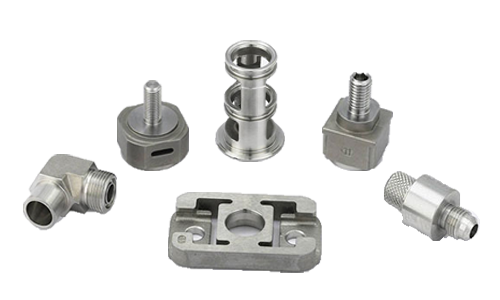
Get a quote now!
Why Melting Point Is a Key Design Parameter
Stainless steel is commonly used in applications where operating temperatures range between 400°C and 1100°C. Although these temperatures are significantly below the melting point of stainless steel, typically between 1375°C and 1530°C, they are close enough to affect mechanical strength, corrosion resistance, and thermal fatigue properties.
In practice, engineering design limits are often set at 50–65% of the alloy’s melting point to avoid:
- Creep deformation, where the material slowly elongates under stress at high temperatures
- Loss of tensile strength, particularly in thin-walled components
- Reduced fatigue resistance, due to grain boundary softening
- Thermal scaling or oxidation, especially in intermittent heat exposure
These limitations underscore the importance of understanding not just the melting point of stainless steel, but also its high-temperature operating behavior.
Key Industries That Rely on Stainless Steel’s High Melting Point
Stainless steel’s widespread adoption across sectors is largely due to its ability to perform reliably under thermal stress. Below are typical industries where the melting point of stainless steel in Celsius and Fahrenheit is directly relevant to system design and material selection.
Power Generation
In thermal and nuclear power plants, components such as superheater tubes, heat exchanger plates, and turbine housings are subjected to temperatures above 600°C. Here, the melting point of stainless steel 310 and 316 grades ensures continued performance without creep or phase destabilization.
Standards such as ASME Boiler & Pressure Vessel Code Section I & III specify allowable stress levels at high temperatures based on proximity to the alloy’s solidus point.
Petrochemical and Refining
In this sector, equipment like flare stacks, reactors, catalytic crackers, and furnace linings operate under fluctuating high temperatures and corrosive environments. The melting point of 316 stainless steel, combined with its resistance to chloride attack, makes it a preferred material in these processes.
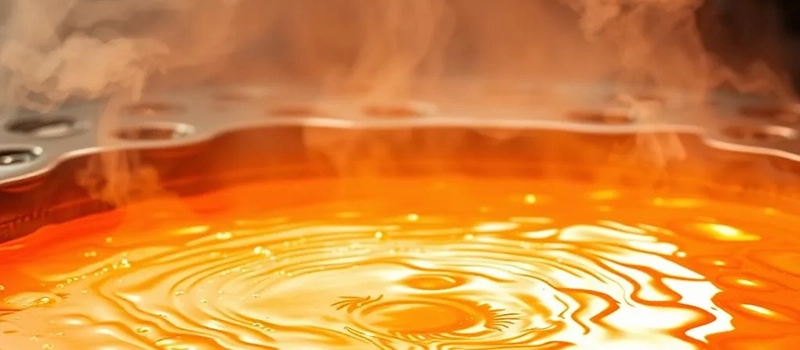
The presence of hydrogen sulfide and halides necessitates a material that remains stable well below its melt point of stainless steel, while maintaining corrosion resistance and mechanical load capacity.
Metallurgical and Furnace Equipment
Furnace furniture, crucibles, and internal chamber linings demand materials that resist deformation near combustion zones. The melting point of stainless steel 310 makes it suitable for applications up to 1150°C in oxidizing conditions, and short-term exposures near 1200°C.
Automotive and Aerospace
High-performance exhaust systems, turbocharger housings, and engine manifolds must withstand rapid thermal cycling. Stainless steels with higher melting points, such as 17-4PH and 310, are often specified for their thermal shock resistance and stability at elevated temperatures.
In aerospace, although titanium and nickel superalloys are more commonly used for extreme heat environments, stainless steel is still used in secondary thermal structures where cost-efficiency and moderate high-heat resistance are acceptable.
Food Processing and Pharmaceuticals
While operating temperatures are generally lower, sterilization, CIP/SIP processes, and steam exposure still reach 121°C to 150°C regularly. The melting point of stainless steel 304 and 316L ensures material durability and structural performance over prolonged sterilization cycles.
FDA and EU food contact compliance documents reference material performance at elevated temperatures, especially under pressurized cleaning systems or autoclaves.
Guidelines for Selecting Stainless Steel Based on Melting Point
When designing for elevated temperature environments, selecting the correct grade of stainless steel involves more than checking whether the melting point of stainless steel exceeds the intended service temperature. A structured approach that integrates melting behavior, alloy composition, corrosion resistance, and mechanical properties is essential to ensure both performance and longevity.
Understanding the Role of Melting Point in Material Selection
While the melting point of stainless steel typically ranges between 1375°C and 1530°C (2500°F–2785°F), materials are never selected to operate near their melting threshold. Instead, the melting point serves as a reference to evaluate thermal performance margins.
In engineering practice, materials are often derated to 60–70% of their solidus temperature to avoid:
- Onset of creep deformation
- Grain boundary weakening
- Thermal scaling or oxidation
- Loss of microstructural stability
Therefore, selecting a stainless steel grade requires identifying not only the melting point of stainless steel in Celsius or Fahrenheit, but also the maximum allowable working temperature, which varies by grade and environment.
Selection Criteria Based on Melting Behavior
When engineers and procurement teams evaluate material options, the following selection logic is recommended:
1. Define Operating Temperature Profile
Determine the maximum, minimum, and cycling frequency of temperatures the component will experience. For example:
- Steam lines: Continuous 400–600°C
- Furnace trays: Intermittent 950–1100°C
- Exhaust systems: Thermal cycling from ambient to 800°C
2. Match Grade to Thermal Limits
Referencing the known thermal limits of stainless steel grades:
| Stainless Steel Grade | Melting Point (°C) | Recommended Max Service Temp (°C) |
|---|---|---|
| 304 | 1400 – 1450 | ~870 (oxidizing), ~925 (intermittent) |
| 316 / 316L | 1365 – 1400 | ~870 (continuous) |
| 310 | 1425 – 1510 | ~1150 (continuous) |
| 17-4PH | 1400 – 1440 | ~550 (age hardened) |
These working temperatures are typically 600–700°C below the melting point of stainless steel used.
3. Assess Corrosive Environment
For high-temperature applications involving corrosive elements (e.g., sulfur compounds, halides), melting point alone is not sufficient. For example:
- 316 stainless steel is preferred in chloride-rich, high-temperature settings
- 310 stainless steel is favored in oxidizing furnace environments
The melt point of stainless steel is only part of the equation; corrosion behavior at elevated temperatures is often the limiting factor in grade selection.
4. Consider Formability and Weldability
Some high-temperature stainless steel grades may offer superior melting points but reduced weldability or increased brittleness. Engineers must consider:
- Heat-affected zone performance
- Risk of intergranular corrosion
- Post-weld heat treatment compatibility
Grades like 316L are often selected where melting point of stainless steel is important, but fabrication simplicity is also required.
5. Evaluate Cost-Performance Ratio
While 310 stainless steel offers superior thermal stability, it is significantly more expensive than 304 or 316. Unless the application justifies the higher thermal threshold, selecting a moderate melting point stainless steel with optimized corrosion protection may be more economical.
Need Help? We’re Here for You!
Example: Material Selection for a Heat Exchanger
Operating condition:
- Max temp: 750°C
- Medium: Wet steam with chloride contamination
- Design life: 15 years
Evaluation:
- 304 stainless steel excluded due to insufficient chloride resistance
- 310 offers margin on melting point but excessive cost
- 316L selected for its acceptable melting point of 1365–1400°C, plus superior resistance to pitting in chloride environments and good weldability
This demonstrates how melting point aligns with thermal design as one of several decision-making criteria.
Incorporating Melting Point into Technical Documentation
In engineering drawings and procurement specifications, the melting point of stainless steel is often not directly listed but influences:
- Material callouts (e.g., ASTM A240 Type 316L)
- Thermal treatment requirements
- Weld procedures and filler selection
- Design derating curves in ASME or EN codes
Procurement departments often reference manufacturer datasheets or ISO-certified material test reports (MTRs) to confirm that selected grades meet both thermal and mechanical expectations for the intended service range.
Conclusion
The melting point of stainless steel ranges from 1375°C to 1530°C, varying by grade. Understanding this thermal range is essential for selecting suitable stainless steel materials in high-temperature applications, ensuring performance and safety below their critical melt point.




